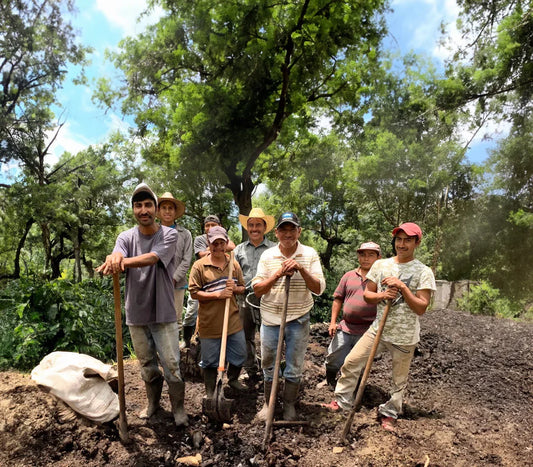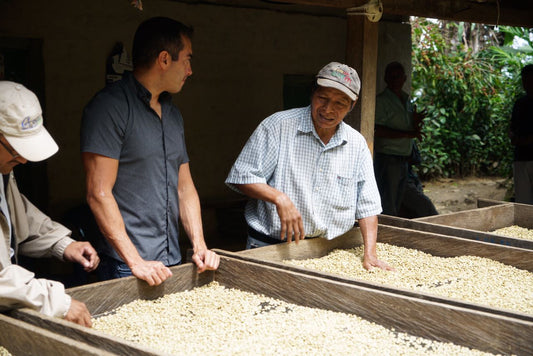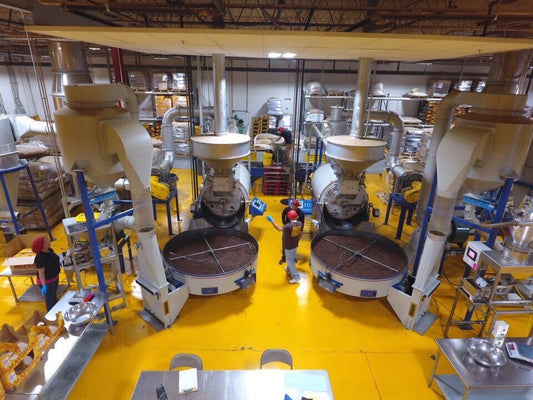
Abrazando el legado cultural: honrando las civilizaciones indígenas
Abrazando el legado cultural: honrando las civilizaciones indígenas
En el gran esquema de la historia humana, existen hilos de brillantez cultural entretejidos por civilizaciones indígenas que a menudo pasan desapercibidos, especialmente en las culturas angloamericanas, donde las narrativas de las minorías o los marginados suelen pasarse por alto. Sin embargo, estas historias son vitales si queremos entender la resiliencia, la innovación y las perspectivas que definen a las comunidades indígenas. En torno a estas tres comunidades se encuentran los olmecas, los chachapoyas y los guayabos; echemos un vistazo a los atributos notables y el impacto persistente de estas civilizaciones.

El enigmático legado olmeca
La civilización olmeca, activa en lo que hoy conocemos como México desde el 1200 a. C. hasta el 400 a. C., sigue sumida en el misterio. Reconocida como la "cultura madre" de Mesoamérica, la cultura olmeca dejó un impacto duradero en las sociedades posteriores, pero sus notables logros suelen pasarse por alto.
Un atributo único de los olmecas fue su dominio de las esculturas colosales de piedra, que dejaron tras de sí grandes cabezas de piedra que, hasta el día de hoy, siguen desconcertando a los historiadores. La Dra. Ana Ramírez, arqueóloga especializada en culturas mesoamericanas, reflexiona sobre las contribuciones de los olmecas: "Las esculturas de piedra de los olmecas no solo eran monumentales en tamaño, sino que también encarnaban un estilo artístico sofisticado, que resaltaba su artesanía avanzada". Sin embargo, la escasez de registros escritos plantea un desafío para comprender su sociedad y sus complejidades.

Los guerreros de las nubes: el espíritu invicto de los Chachapoyas
En las altas montañas cubiertas de nubes del norte de Perú, la civilización Chachapoya prosperó entre los siglos IX y XV. A menudo llamados los "Guerreros de las Nubes", los Chachapoya construyeron intrincadas estructuras de piedra y mostraron una notable habilidad en el tejido y la cerámica. Sin embargo, su historia a menudo ha sido eclipsada por el Imperio Inca .
Los Chachapoya eran conocidos por sus habilidades arquitectónicas y construyeron estructuras elaboradas, incluidos asentamientos fortificados en la cima de una montaña y tumbas intrincadas en los acantilados. Un ejemplo notable es la fortaleza de Kuelap, a la que a menudo se hace referencia como el "Machu Picchu del Norte". Situada en la cima de una montaña, Kuelap cuenta con enormes muros de piedra, edificios circulares y tallados intrincados, que muestran la destreza de ingeniería y la sofisticación cultural de los Chachapoya.
Los Chachapoya tenían prácticas funerarias distintivas, que reflejaban su conexión con los bosques nubosos que rodeaban sus asentamientos. Construían impresionantes mausoleos en la ladera de los acantilados, conocidos como "purunmachus", donde depositaban a sus difuntos. Estas tumbas a menudo se alzaban en precarios bordes de acantilados, mezclándose con el entorno natural. Los Chachapoya creían que estos lugares de enterramiento elevados proporcionaban una conexión espiritual entre los vivos y el más allá.
La antropóloga Dra. Sofía Martínez describe los atributos únicos de los Chachapoya: "Sus hazañas arquitectónicas, como la fortaleza de Kuelap, demuestran su dominio de la construcción en piedra y de las estrategias defensivas". A pesar de su feroz resistencia a la conquista inca, la historia de los Chachapoya sigue siendo relativamente desconocida, lo que limita nuestra comprensión de sus logros culturales.

La cultura guayabo
Una de las civilizaciones indígenas menos conocidas de América Latina es la cultura Guayabo, que prosperó en lo que hoy es Costa Rica desde alrededor del año 1000 a. C. hasta el 1400 d. C. La civilización Guayabo, también conocida como la "Ciudad Perdida de Costa Rica", es una fascinante sociedad antigua que a menudo pasa desapercibida en las narraciones históricas.
La cultura Guayabo dejó tras de sí notables sitios arqueológicos que permiten conocer su avanzada sociedad. El más notable de estos sitios es el Monumento Nacional Guayabo, una ciudad precolombina en la selva tropical cerca del volcán Turrialba. La ciudad muestra la impresionante planificación urbana de Guayabo, con intrincados sistemas viales, acueductos y cimientos de piedra.
A pesar de la limitada información disponible sobre la cultura Guayabo, se cree que desarrollaron una estructura social compleja y eran hábiles en agricultura, alfarería y metalurgia. Su capacidad para construir extensos sistemas de gestión del agua demuestra su impresionante comprensión de la ingeniería y la adaptación al medio ambiente.
Un aspecto importante de la civilización Guayabo son sus prácticas espirituales y rituales. El Monumento Nacional Guayabo cuenta con áreas ceremoniales, esferas de piedra tallada y petroglifos, lo que sugiere la importancia de las creencias y rituales religiosos en su sociedad.
Lamentablemente, gran parte de sus prácticas espirituales siguen envueltas en misterio debido a la falta de registros escritos. Si bien la civilización Guayabo puede no ser tan ampliamente reconocida como algunas de las civilizaciones antiguas más famosas de América Latina, como los mayas o los incas, su legado y sus contribuciones a la historia y la cultura de Costa Rica no deben pasarse por alto. Se están realizando esfuerzos para preservar y estudiar el Monumento Nacional Guayabo, arrojando luz sobre el rico e intrigante pasado de esta civilización indígena.
No es ningún secreto que América Latina tiene una cultura y una historia ricas y complejas, construidas sobre los cimientos establecidos por civilizaciones ancestrales. Las esculturas de piedra de los olmecas, el espíritu de los chachapoyas y los montículos de la cultura guayabo sirven como testimonio de la creatividad, la resiliencia y los diversos legados culturales de estas civilizaciones.
No hay duda de que América Latina siempre ha sido una región llena de recursos y espiritualidad, y ya es hora de que demos un salto adelante para forjar un camino hacia una comprensión más amplia de nuestra herencia humana compartida, garantizando que las voces de los no mencionados se escuchen y se preserven.


